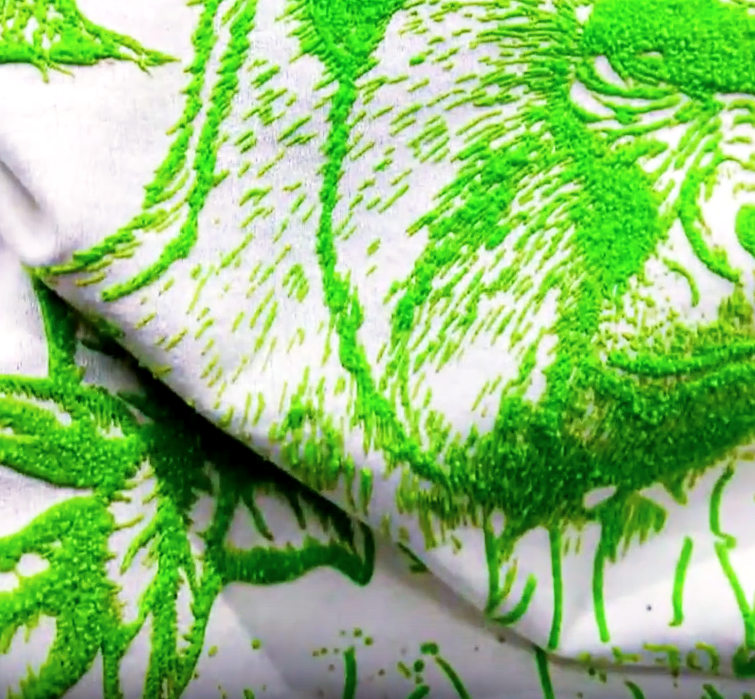What is the Difference Between Plastisol vs Water Based Ink?
When it comes to screen printing inks, the choice between water based and plastisol inks can significantly impact your results, process, and environmental footprint. Understanding the characteristics of each ink type is crucial in making an informed decision for your printing projects. This article delves into the differences between plastisol and water-based inks, helping you choose the best option for your needs.
What are Plastisol Inks?
Plastisol inks are a popular choice in the screen printing industry, known for their versatility and durability. These inks are composed of PVC particles suspended in a plasticizing emulsion. Plastisol inks do not dry when exposed to air, making them easy to work with during the printing process. Instead, they require heat curing, usually at temperatures around 320°F (160°C), to become solid and adhere to the fabric.
Characteristics of Plastisol Inks:
- Opacity: Plastisol inks offer excellent opacity, allowing for vibrant and solid colors, even on dark fabrics.
- Durability: Once cured, plastisol inks are highly durable and resistant to washing and cracking, making them ideal for long-lasting prints.
- Ease of Use: These inks remain wet on the screen, allowing for longer print runs without worrying about the ink drying out.
- Versatility: Plastisol can be used on a variety of materials, including cotton, polyester, and blends.
Environmental Impact:
One of the drawbacks of plastisol ink is its environmental impact. The PVC content and the need for chemical solvents during the cleanup process raise concerns about sustainability and safety. Additionally, the curing process consumes a significant amount of energy due to the high temperatures required.
What are Water-Based Inks?
Water-based inks are made with water as the primary solvent, making them a more environmentally friendly option. These inks penetrate the fabric fibers, resulting in a softer feel compared to the more plastic-like texture of plastisol inks. Water-based inks are ideal for creating a vintage or worn-in look on garments.
Characteristics of Water-Based Inks:
- Soft Hand Feel: Water-based inks are absorbed by the fabric, resulting in a print that feels softer and more breathable.
- Environmental Friendliness: These inks are generally considered more eco-friendly due to their water base and reduced reliance on harmful chemicals.
- Vibrant Colors: Water-based inks can produce bright and vibrant prints, especially on light-colored fabrics.
- Print Durability: While durable, water-based prints may not be as resilient as plastisol prints, especially on dark fabrics or under heavy washing conditions.
Environmental Impact:
Water-based inks are touted for their lower environmental impact. They emit fewer volatile organic compounds (VOCs) and are easier to clean up with water, reducing the need for harsh solvents. However, achieving vibrant colors on dark fabrics often requires multiple passes or underbase printing, which can increase water and energy usage.

What’s the Difference Between Water-Based and Plastisol Inks?
Opacity and Vibrancy:
- Plastisol Inks: Known for their high opacity, plastisol inks can produce bright, solid colors on any fabric color.
- Water-Based Inks: While water-based inks can be vibrant on light fabrics, they may require additional layers or an underbase to achieve similar results on dark fabrics.
Feel and Finish:
- Plastisol Inks: These inks sit on top of the fabric, resulting in a slightly raised, plastic-like feel.
- Water-Based Inks: Penetrating the fabric fibers, water-based inks provide a softer, more natural feel.
Durability:
- Plastisol Inks: Highly durable and resistant to washing and cracking, plastisol prints are built to last.
- Water-Based Inks: While durable, these prints may fade or wear out faster, especially on dark fabrics or with frequent washing.
Environmental Impact:
- Plastisol Inks: Contains PVC and requires chemical solvents for cleanup, posing environmental and safety concerns.
- Water-Based Inks: More eco-friendly with fewer VOCs and easier cleanup, but may use more water and energy for dark fabric printing.
Water-Based Inks
Water-based inks have gained popularity due to their eco-friendly properties and soft feel on fabrics. They are particularly favored in fashion and retail markets where the feel and breathability of the garment are paramount. These inks are also suitable for high-detail prints, as they can produce sharp and intricate designs.

Advantages of Water-Based Inks:
- Eco-Friendliness: Water-based inks are more environmentally friendly, emitting fewer harmful chemicals and requiring less energy for cleanup.
- Soft Feel: The ink penetrates the fabric, resulting in a soft, breathable print that enhances the comfort of the garment.
- Detail and Precision: Ideal for high-detail prints, water-based inks can create intricate and sharp designs.
Disadvantages of Water-Based Inks:
- Longer Drying Time: Water-based inks can take longer to dry, which can slow down the production process.
- Limited Opacity: Achieving vibrant colors on dark fabrics can be challenging and may require additional layers or an underbase.
- Durability Concerns: While durable, water-based prints may not be as long-lasting as plastisol prints, particularly on dark fabrics.
Which Ink Should You Choose?
The choice between plastisol and water-based inks depends on several factors, including the desired print quality, environmental considerations, and the type of fabric being used. Here are some points to consider when making your decision:
- Fabric Type: Plastisol inks work well on a wide range of fabrics, including cotton, polyester, and blends. Water-based inks are ideal for cotton and light-colored fabrics but may require more effort to achieve vibrant prints on dark fabrics.
- Print Durability: If you need a print that will withstand frequent washing and wear, plastisol inks are the better choice due to their durability.
- Environmental Impact: For eco-conscious brands, water-based inks offer a more sustainable option with fewer harmful chemicals and easier cleanup.
- Feel and Comfort: For a soft, breathable print, water-based inks are preferable as they penetrate the fabric fibers rather than sitting on top.
How to Choose the Right Ink for Your Artwork
Choosing the right ink for your artwork involves considering the specific requirements of your design and the intended use of the printed garment. Here are some tips to help you make the best choice:
- Design Complexity: For intricate and detailed designs, water-based inks can produce sharp and precise prints. However, plastisol inks can also achieve high detail, especially when using fine mesh screens.
- Color Requirements: If your design requires bright, opaque colors on dark fabrics, plastisol inks are the better option. Water-based inks can achieve vibrant colors on light fabrics but may need additional layers for dark fabrics.
- Production Speed: Plastisol inks do not dry on the screen, allowing for longer print runs without interruptions. Water-based inks may require faster production or special care to prevent drying on the screen.
- Customer Preference: Consider the preferences of your target audience. If they value sustainability and comfort, water-based inks may be more appealing. For customers prioritizing durability, plastisol inks are a solid choice.
Conclusion
Both plastisol and water based ink have their unique advantages and disadvantages, making them suitable for different types of screen printing projects. By understanding the characteristics, benefits, and limitations of each ink type, you can make an informed decision that best meets your needs and aligns with your brand values. Whether you prioritize environmental sustainability, print durability, or the feel of the garment, there’s an ink choice that can help you achieve your desired results in screen printing.
Choosing the right ink for your screen printing projects can make a significant difference in the quality and longevity of your prints. Evaluate your specific requirements and experiment with both plastisol and water-based inks to determine which one best suits your needs.








